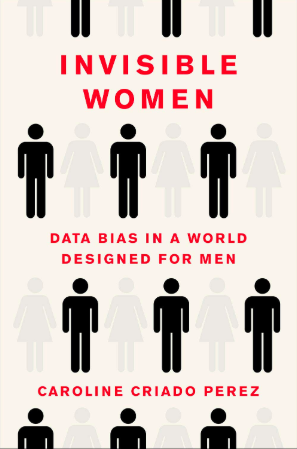Thanks so much to everyone who came to Where We Stand last week!
 In her remarks, Dean Beverly Wendland spoke about Perez’s research, which we posted about here a few months ago. You can listen to the podcast that had Dean Wendland racing to buy the book here.
In her remarks, Dean Beverly Wendland spoke about Perez’s research, which we posted about here a few months ago. You can listen to the podcast that had Dean Wendland racing to buy the book here.
And stay tuned for a symposium on bias in research questions, data collection, analysis, and results coming to JHU in 2020!
Below is an excerpt from our earlier post, quoting The Guardian article.
“The gender data gap is both a cause and a consequence of the type of unthinking that conceives of humanity as almost exclusively male.”
Men are more likely than women to be involved in a car crash, which means they dominate the numbers of those seriously injured in them. But when a woman is involved in a car crash, she is 47% more likely to be seriously injured, and 71% more likely to be moderately injured, even when researchers control for factors such as height, weight, seatbelt usage, and crash intensity. She is also 17% more likely to die. And it’s all to do with how the car is designed – and for whom.
Women tend to sit further forward when driving. This is because we are on average shorter. Our legs need to be closer to reach the pedals, and we need to sit more upright to see clearly over the dashboard. This is not, however, the “standard seating position”, researchers have noted. Women are “out of position” drivers. And our wilful deviation from the norm means that we are at greater risk of internal injury on frontal collisions. The angle of our knees and hips as our shorter legs reach for the pedals also makes our legs more vulnerable. Essentially, we’re doing it all wrong.